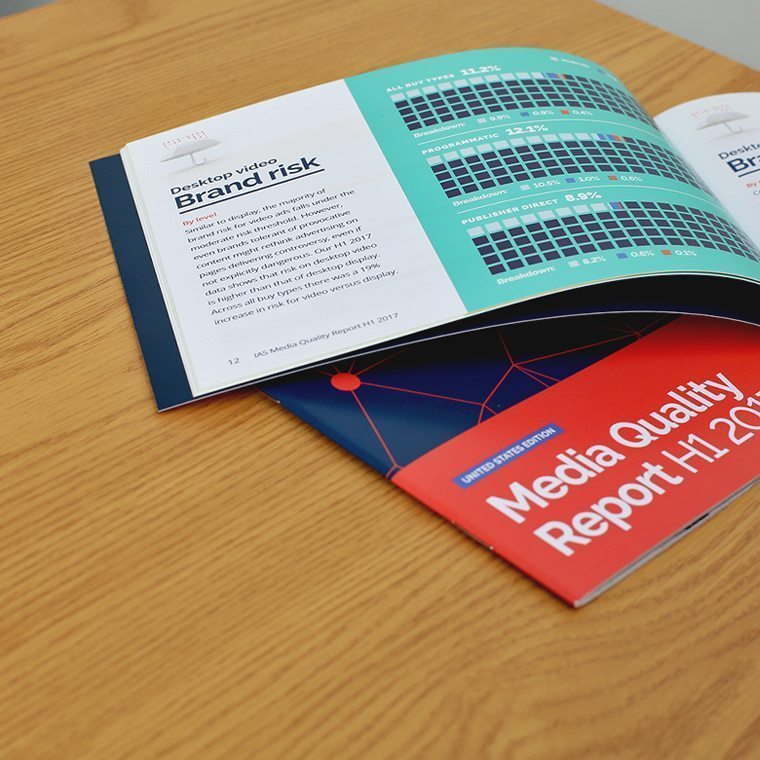Recently, we presented the results of the latest Media Quality Report for H1 2017. We were pleased by the number of insightful questions we fielded during the webinar. Unfortunately, we were unable to respond to everyone. Below, we’ve addressed a few of the top inquiries that we were unable to respond to during the broadcast.
How does IAS measure brand safety?
We use data science to create an effective and precise approach. Our extensive data science team allows us to build a more effective and dynamic solution for our clients. By dynamically analyzing content based on multiple variables such as copy, inbound and outbound links, files, and metadata inputs, we are able to continuously score and rescore web pages based on risk categories and thresholds. This dynamic approach ensures that if the environment changes, our models will still protect brands with each shift.
Traditional models, such as exclusion lists, tend to be limited and inefficient. Plus, this method eliminates entire domains, rather than the specific pages within a given domain that pose harm to brands, which could negatively impact the ability to scale.
How do you classify risk?
We classify risk using core content categories: adult, alcohol, gambling, hate speech, illegal downloads, illegal drugs, offensive language and controversial content, and violence.
What qualifies as risk can vary by brand. For example, an alcohol brand might have more tolerance for racy content than a financial services brand. We work with each advertiser to create a risk mitigation strategy that’s right for them.
How does IAS define medium, high, and very high brand risk?
Our rating methodology never relies an on a single source of data to evaluate content—it weighs competing for evidence sources to create the most accurate and comprehensive rating of page content. Our page rating process is continuous and is, therefore, a dynamic solution that always reflects the current state of each environment.
Moderate risk
Moderate risk is typically acceptable for all but the most risk-sensitive brands. For example, brands focused on children and families might consider adding moderate risk content to their mitigation strategy. An example of moderate risk is partial nudity, such as swimsuits.
High risk
Higher risk content is generally considered to pose risk to most brands and advertisers. Content that falls within this category is moderately offensive but does not include illegal graphic content. There is a high probability that content within this category is offensive to lead brands and advertisers.
Very high risk
Impressions that fall within the very high risk category pose a significant threat to the majority of brands. Content within this category can include graphic content, usually explicit with a high degree of offensiveness. Additionally, this category may include illegal content categories (e.g., child pornography).
Whether it’s adult content, alcohol, hate speech, illegal downloads, illegal drugs, offensive language, or violence, we’ll work closely with clients to set thresholds for each campaign and assist in preventing them from wasting impressions.
How does brand safety strategy differ when looking at programmatic buys vs. publisher direct?
Overall, risky content is a challenge for brand direct and programmatic advertisers alike. Even for advertisers focused on buying through PMPs, there is still a risk factor. We employ both blocking and pre-bid solutions to protect advertisers from risk within both publishers direct and programmatic buying strategies.
Our blocking technology prevents both display and video ads from appearing on pages that clients seem to be too risky for their brand. We work directly with clients to set thresholds that strategically make sense for their unique brand.
We also offer a pre-bid solution that prevents programmatic buyers from bidding on impressions that are identified to be too risky.
Finally, are there any overall tips or recommendations for mitigating possible harm to my brand from risky content?
Develop a multi-faceted strategic approach. This is essential to protect brands from risky content. This includes using page level analysis, exclusion lists, and keywords to optimize a risk-prevention strategy.
Identify what risk means to each brand. Every brand has different risk concerns and tolerance levels. It’s essential to a well-rounded risk prevention strategy that advertisers have a clear understanding of what’s acceptable and what isn’t.
Don’t rely on a set and forget risk prevention strategy. Ensure that exclusion lists, keywords, and risk definitions are up to date and monitored over time. Environments change; therefore, brands should make sure to adjust their parameters to address these shifts.
Download our H1 2017 Media Quality Report here.
 Share on LinkedIn
Share on LinkedIn Share on X
Share on X


